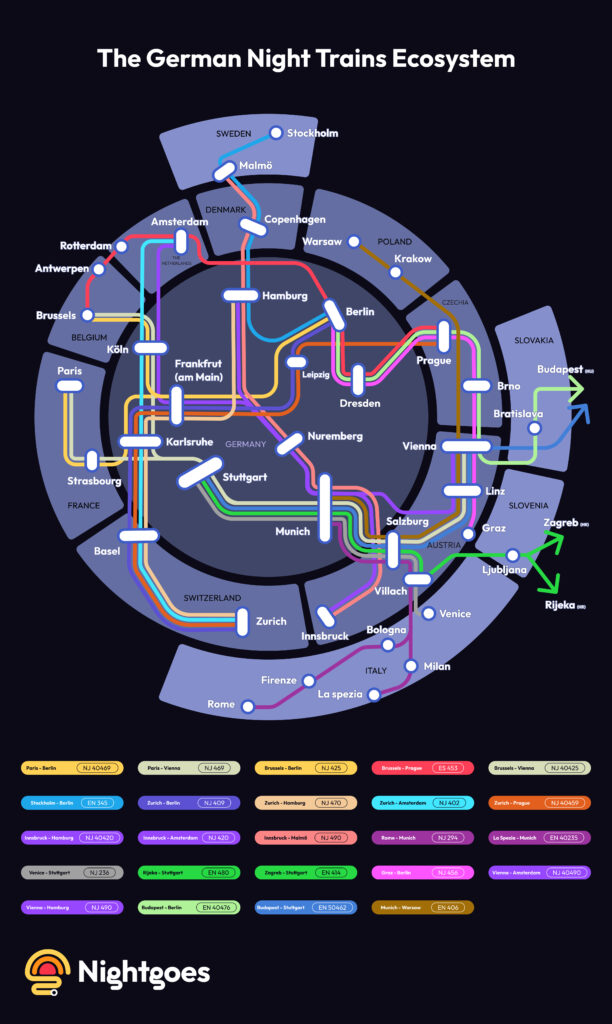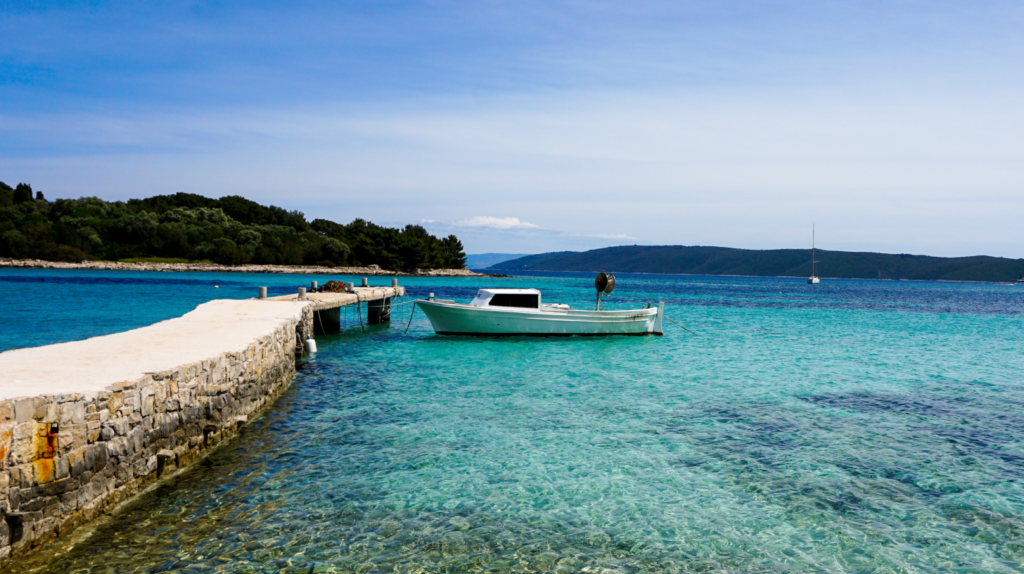This article is part of the CLOSE UP serie. It looks at the history and future of night trains in one European country.s. The night train network is interconnected on a European scale. That said, let’s understand the history and future of night trains on a national scale too.
* * *
Germany boasts an extensive network of approximately 50 night train routes, facilitating seamless connectivity with the broader European rail system. Along these routes, numerous stations provide opportunities to explore cultural highlights of the country.
Juri Maier is Chairman of Back-On-Track Germany. He lives in Berlin and is thus familiar with the European context of night trains, as well as with the specific characteristics of Germany. He helped us to refine our analysis.
A retrospective of night trains in Germany
The German night train market is completely outsourced. Night trains are offered by international or private operators, such as the Austrian company ÖBB and the Dutch company European Sleeper, since Deutsche Bahn withdrew from night trains.
“Germany considers long-distance trains to be a market for businesses to make a profit, rather than a public service. Night trains were not sufficiently profitable and Deutsche Bahn did not want to invest to make them beneficial. So Germany has the same model as Spain: no public subsidies for night trains“, Juri explains.
According to him, the network, which had shrunk considerably to an all-time low in 2016, has been growing again. “The number of night train lines has doubled since then”, however not to 200 lines as some media claim” Juri adds There are also connections, which are not on the Back-On-Track map, which focuses on night trains taking cars.

How to scale the German night trains
There are a number of measures that would be beneficial to expanding the night train network in Germany – and in Europe, as Juri points out, since the network is primarily continental in scale.
It is possible to further increase the number of night trains with two political decisions: a 0% VAT rate for rail and a reduction in the tolls paid by night trains to the basic fee. According to the Back-On-Track team, this could reduce prices by roundabout 15% and make more lines feasible.
However, the other piece of the jigsaw is certainly to “increase aviation prices by reducing the advantages granted to this mode of transport (in particular the advantageous fuel tax exemptions and free emission certificates) so that night trains automatically become more competitive”, explains Juri. Finally to provide a good network from Lisbon to Tallinn you might still need subsidies, but it remains a major challenge to enable subsidising night trains on a European scale.
The good news is that, even though the German national operator has decided not to take on night trains, they are being operated by lines from other European countries. “An advantage of being located in the middle of the continent. Germany is therefore fairly well connected to the rest of Europe, better than France or Italy, for example,” notes the expert.
Growing demand, new routes to try
The night train is a hot topic in Germany right now because many media outlets are covering it. One of the reasons why more and more Germans are considering taking the night train for their upcoming vacations. “At Back-On-Track, we estimate that under current circumstances 10% of European aviation traffic could be redirected to the night train, maybe 15% with increased comfort. However 70% of aviation passengers surveyed say they would consider the train instead of the plane if it was competitive and equally comfortable”, Juri comments.
He suggests that not only enhancements in train car quality, leading to improved comfort and better sleep, but also reduced prices, especially in combination with higher speeds, could position the night train as a compelling alternative to flying for distances up to 2000 or even 2500 kilometers.
In an ideal world, the routes Yuri would create in Germany
- A line going from the North of Germany to Italy
- A line going from the South of Germany to Barcelona
- A line going from Vienna and Berlin to Tallinn via Warsaw, once the Transbaltica track is finished.
- A Brussels & Paris to Warsaw & Prague via Berlin line, as an extension to the existing trains
- A Brussels & Prague to Oslo & Stockholm via Hamburg line once the Femarn Belt Tunnel is finished
Juri’s Selection of Most Scenic Existing German Night Trains
The extended European Sleeper route from Berlin to Prague.
It winds through the Elbe Valley and passes through beautiful mountain landscapes in the Saxon Switzerland region. Dresden is also a magnificent point of interest in the area. Since the train passes through Berlin around 6:30 a.m. and arrives in Prague around 10:30 a.m.,you could enjoy the splendid landscape while having breakfast.
Hamburg – Copenhagen
This route features some impressive bridges: the most impressive being the more than 100 years old Rendsburg High Bridge, winding up to cross the Kiel Canal for several kilometers. In summer, there might still be enough daylight to enjoy the view.
From a technological aspect, the new generation of NightJets between Hamburg and Vienna or Innsbruck are worth a try. They also run between Bregenz and Vienna.
Do you want to plan your night train itinerary in Germany? Visit Nightgoes.com.




